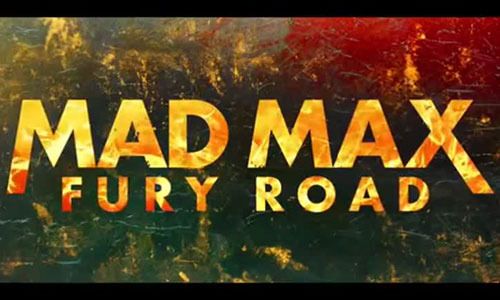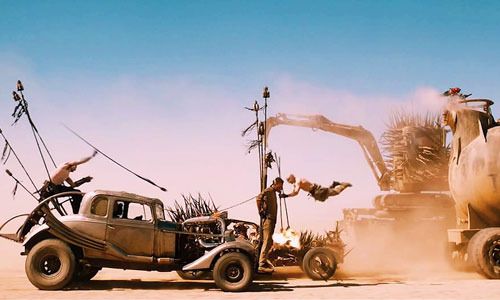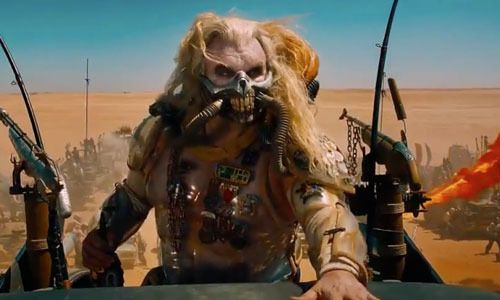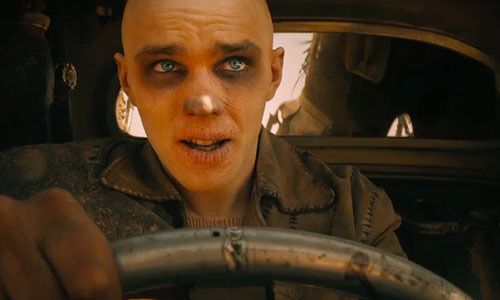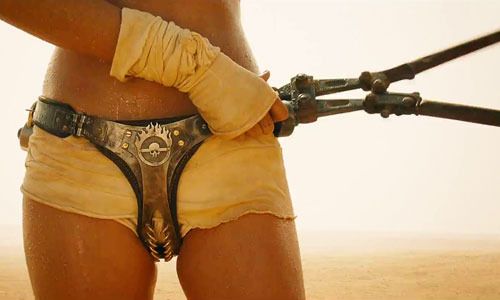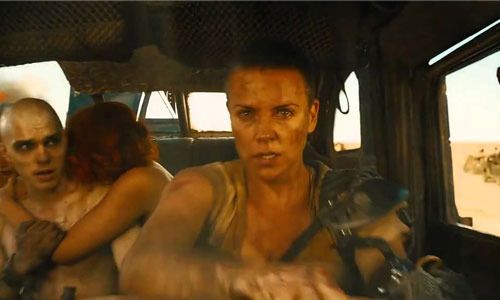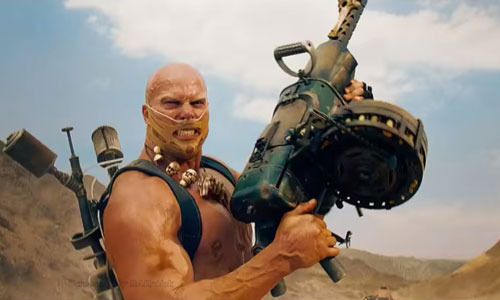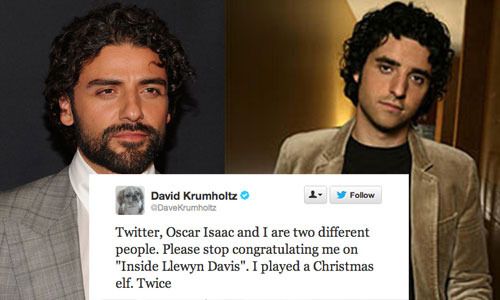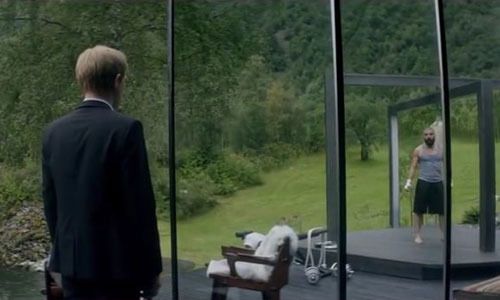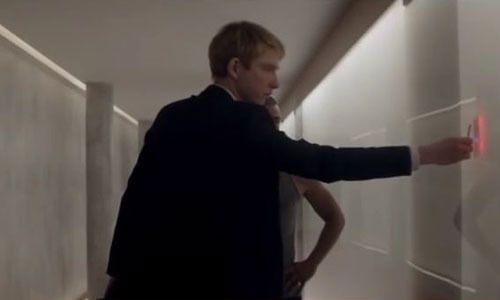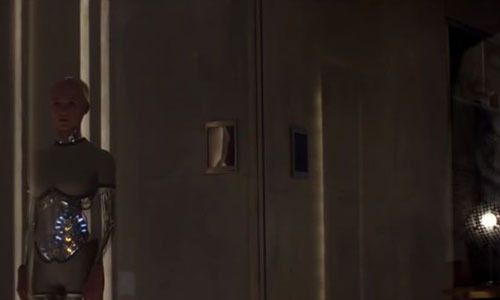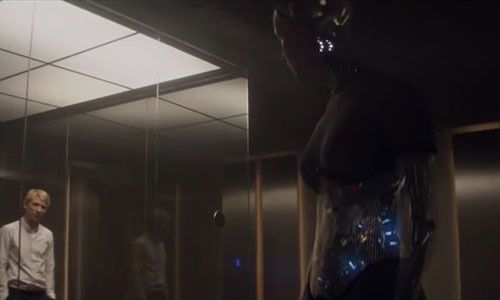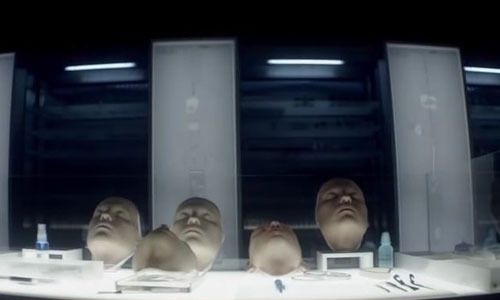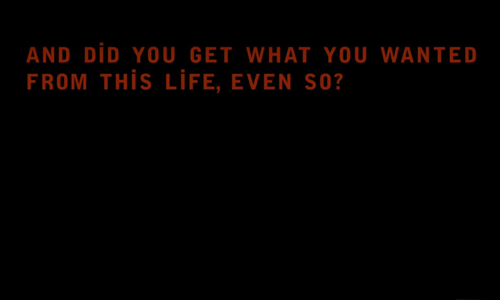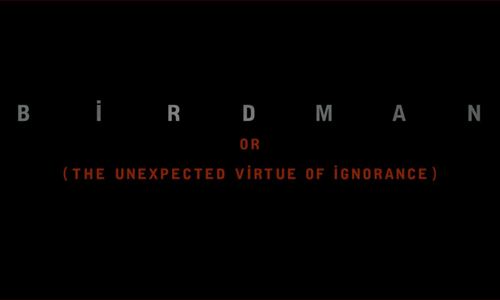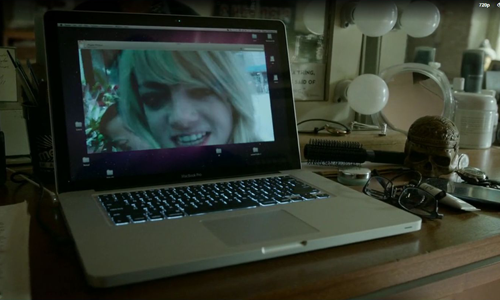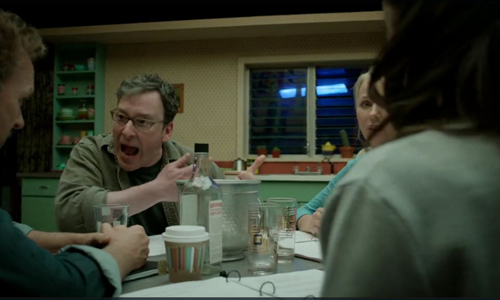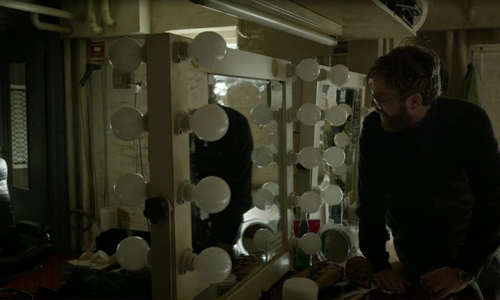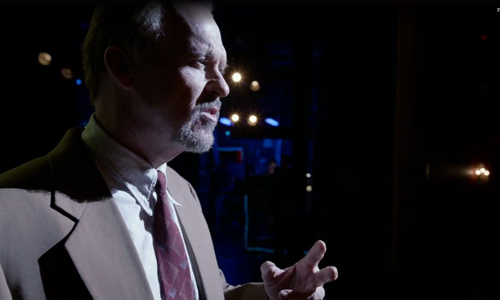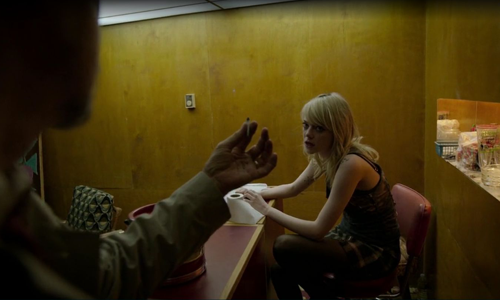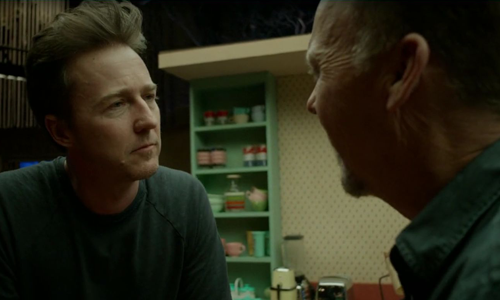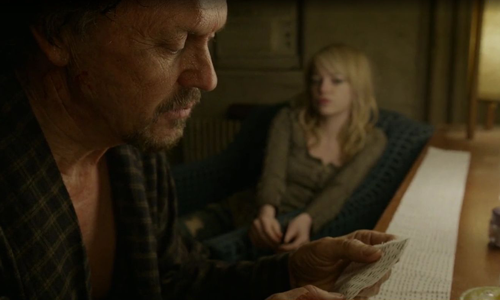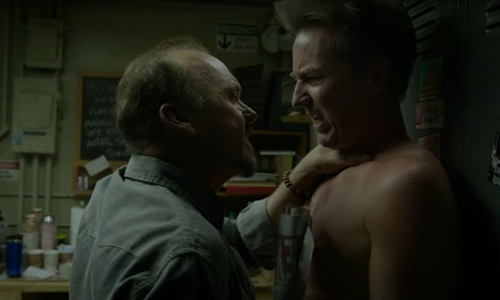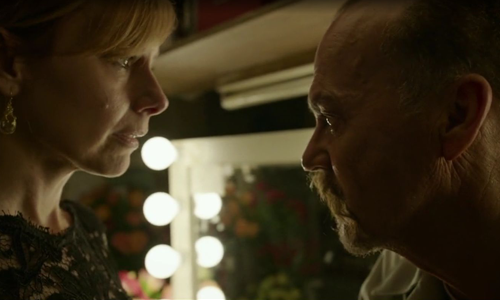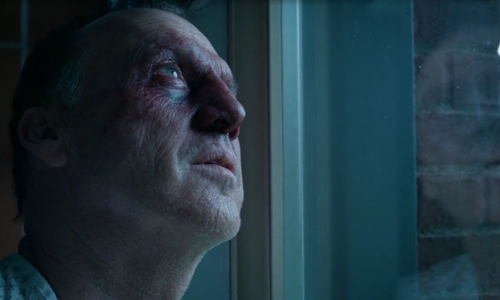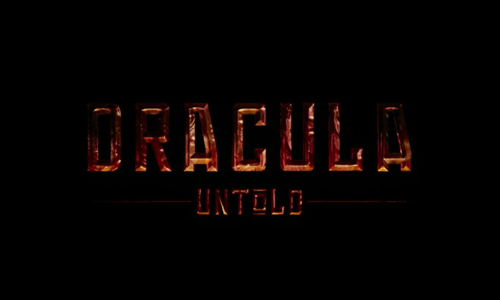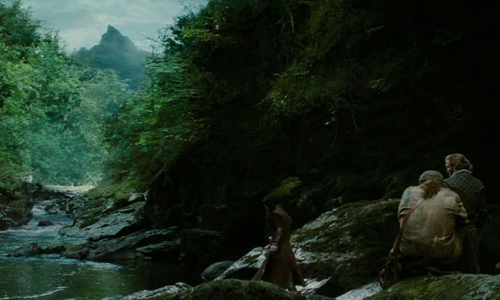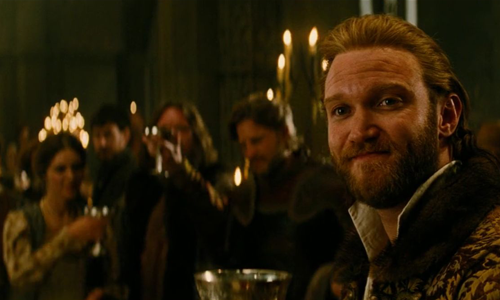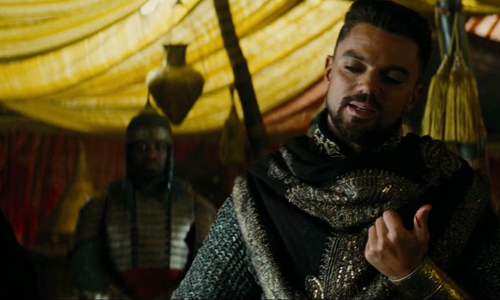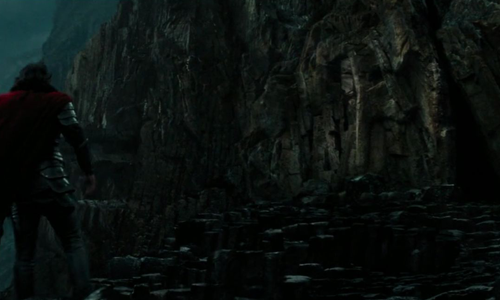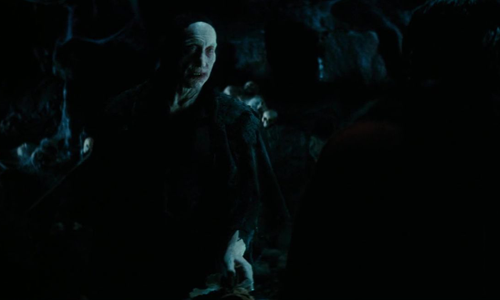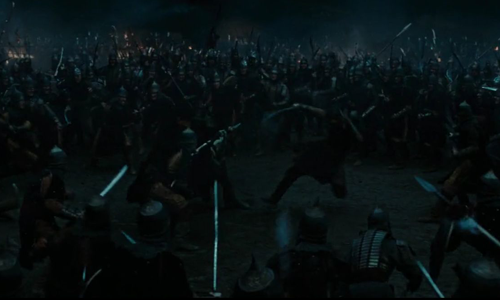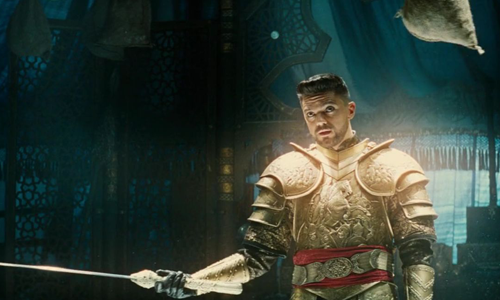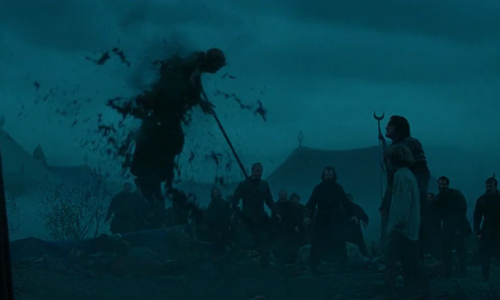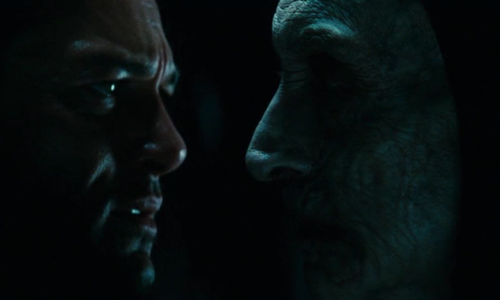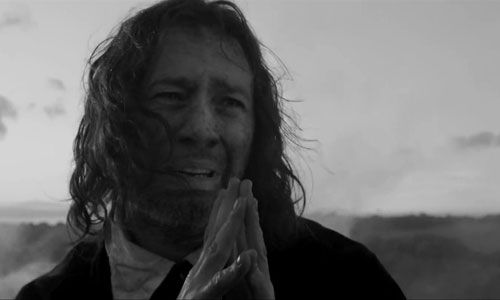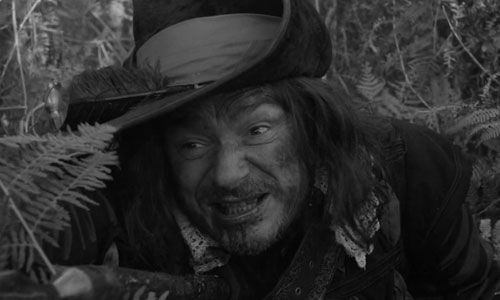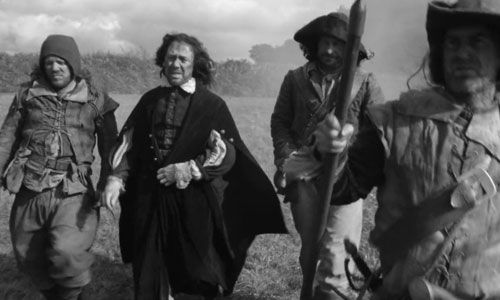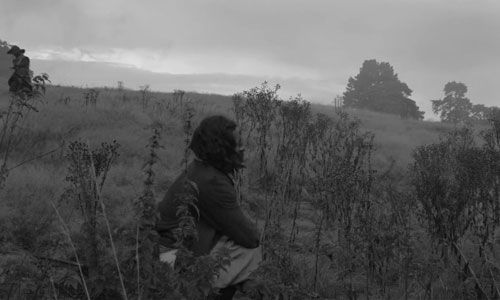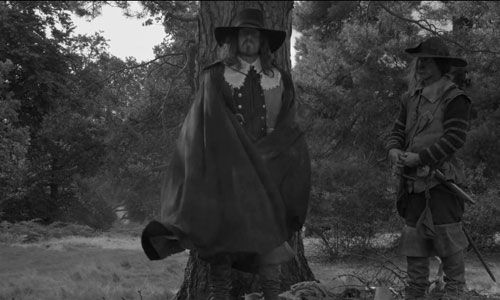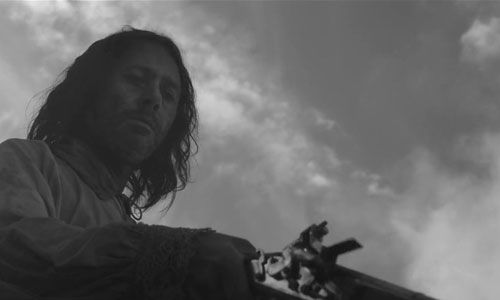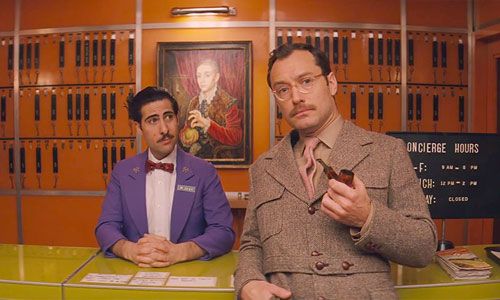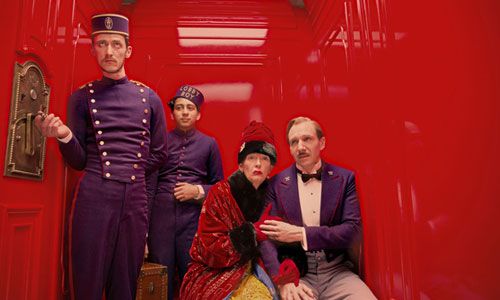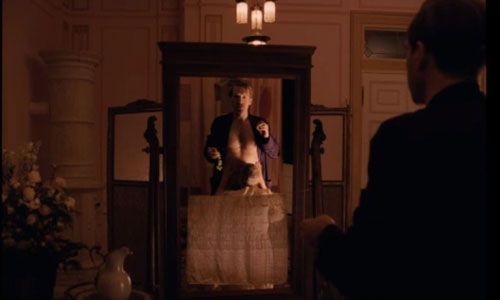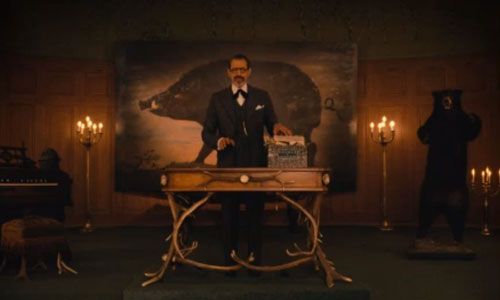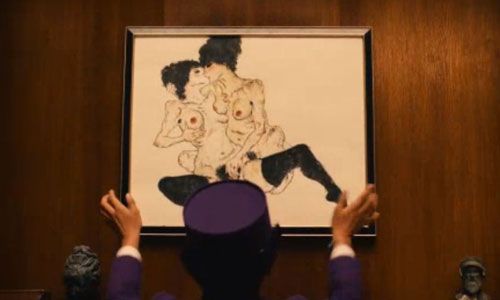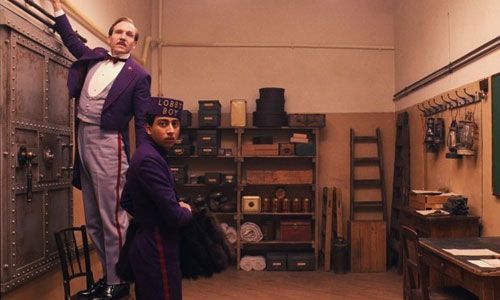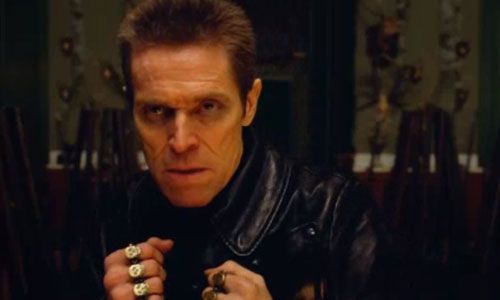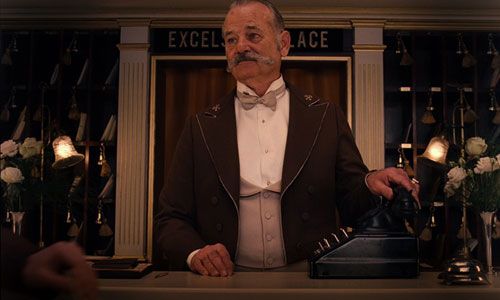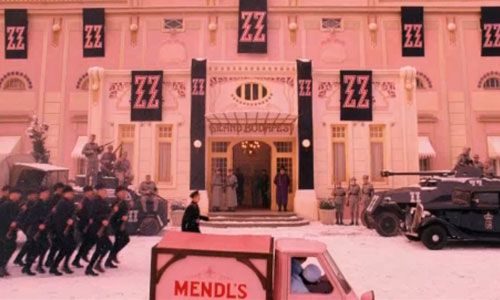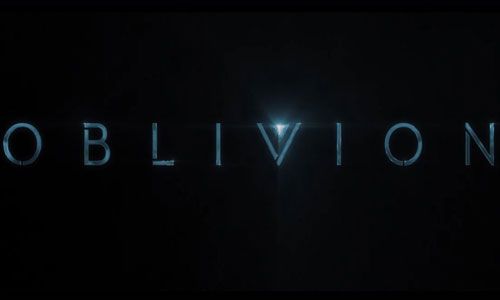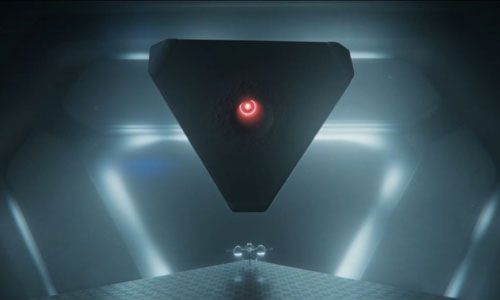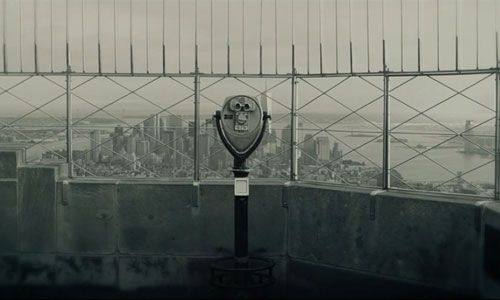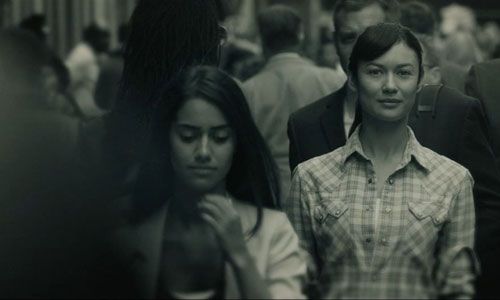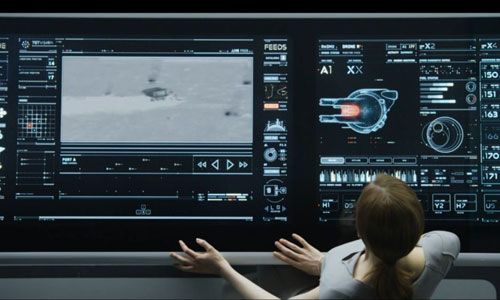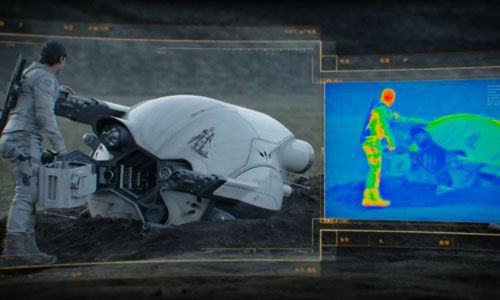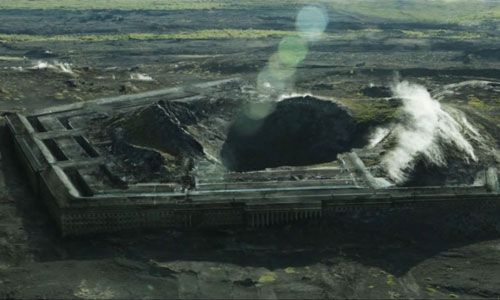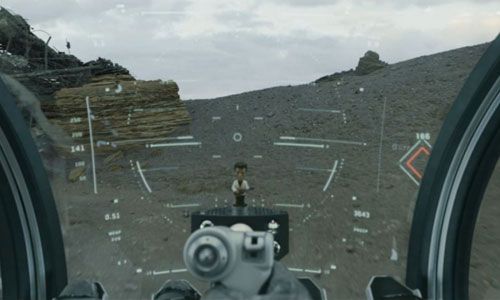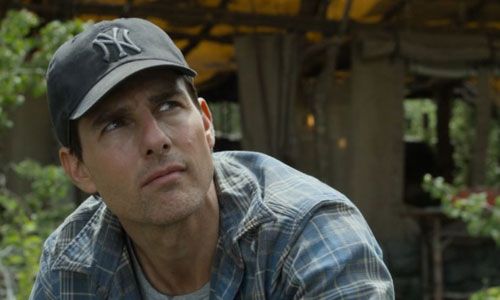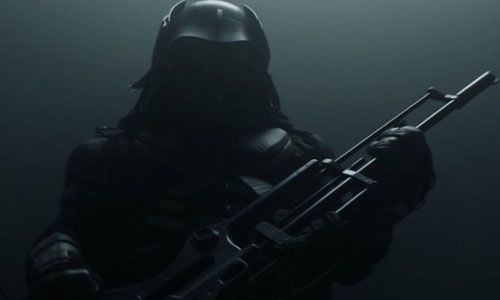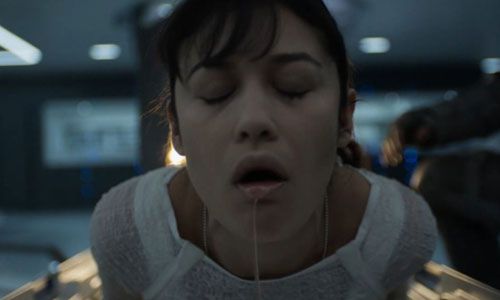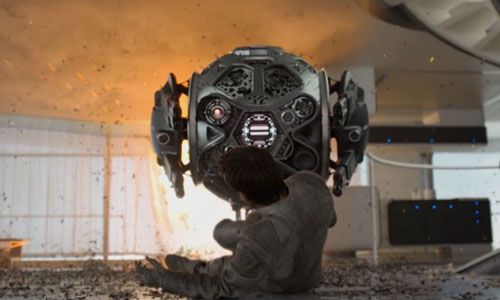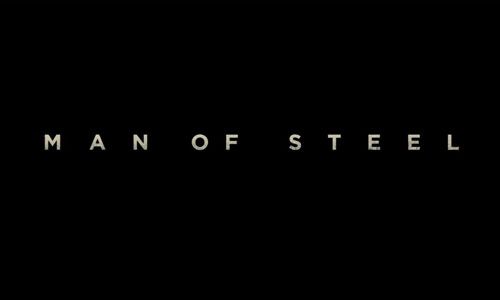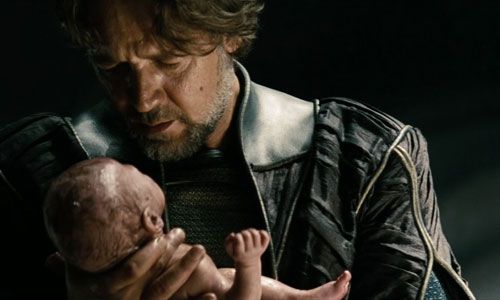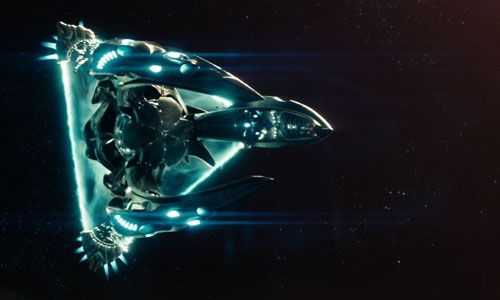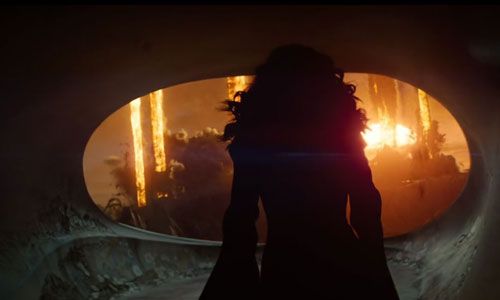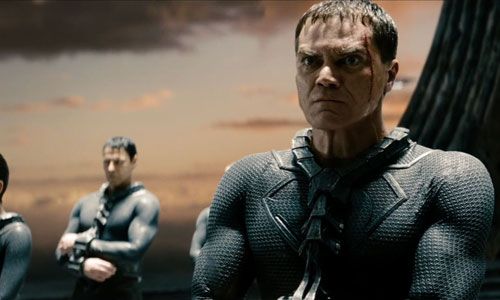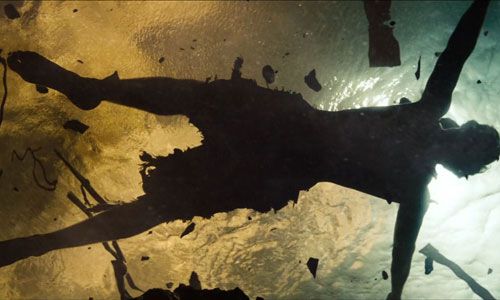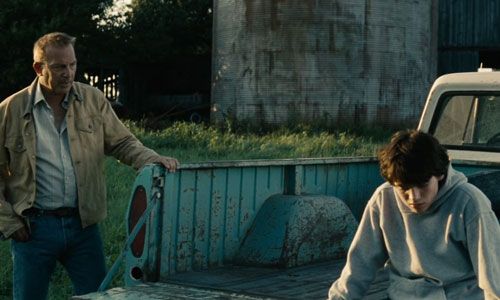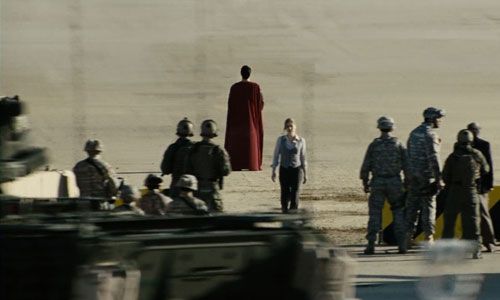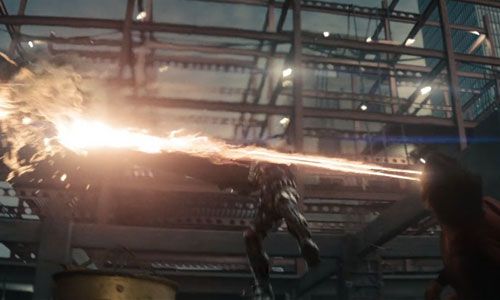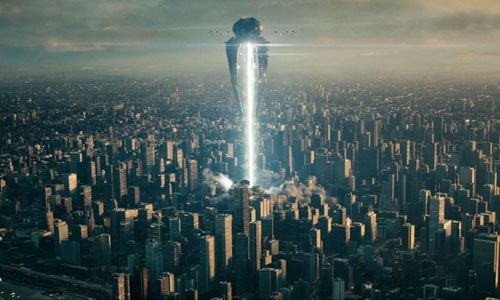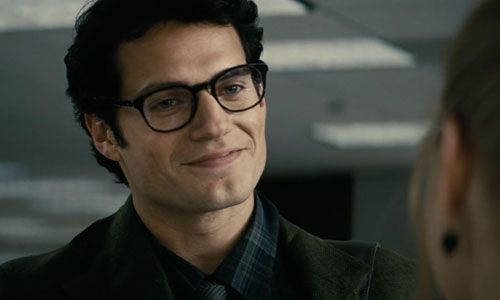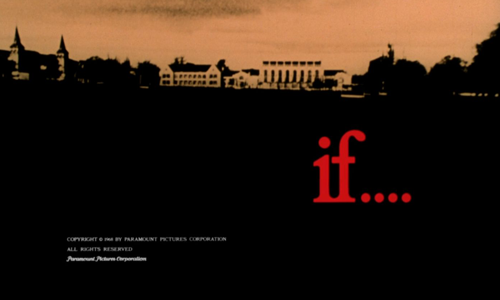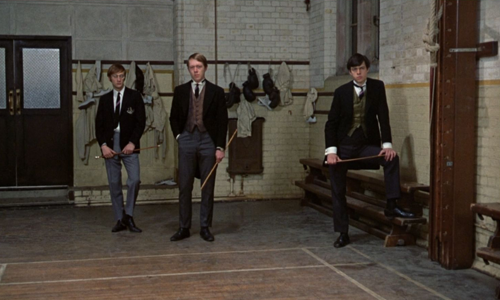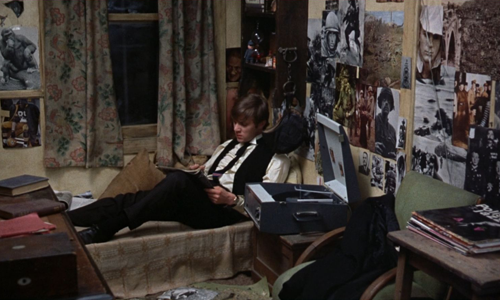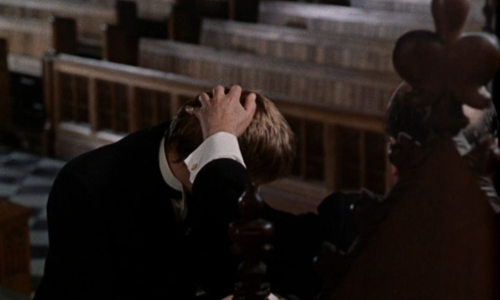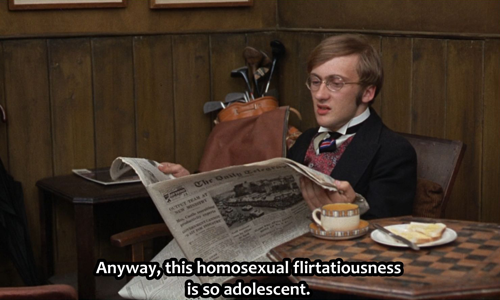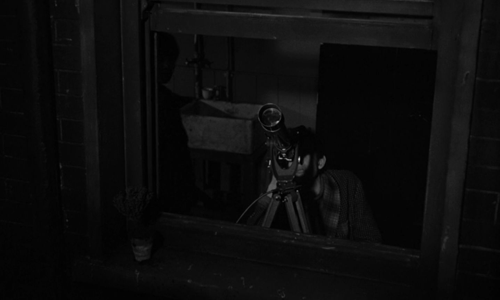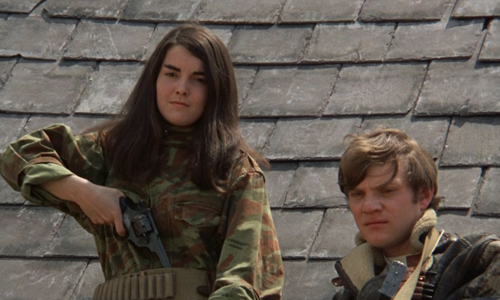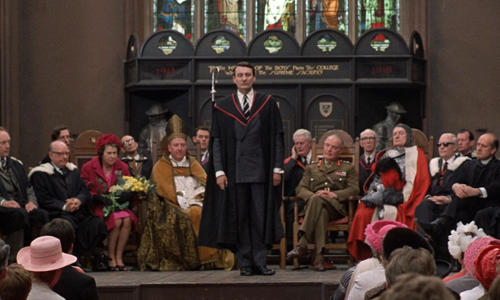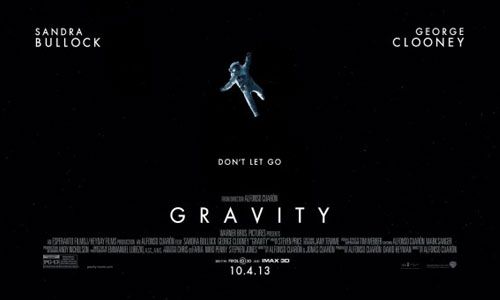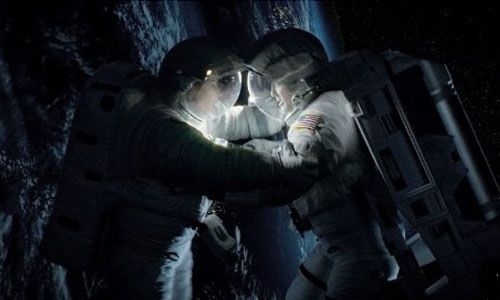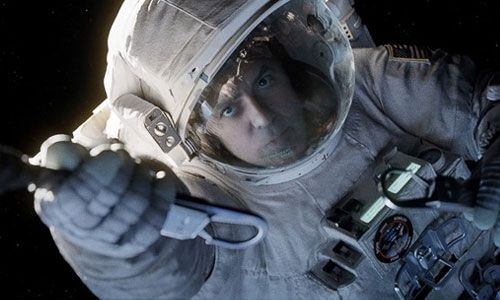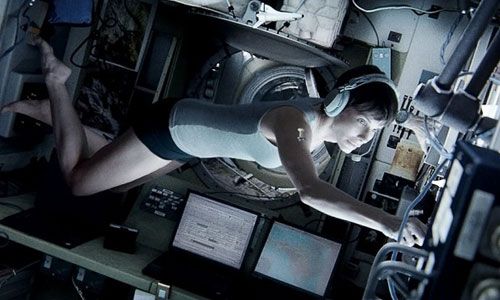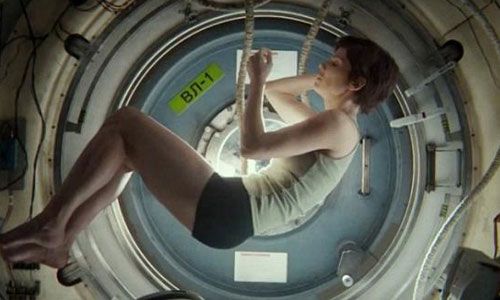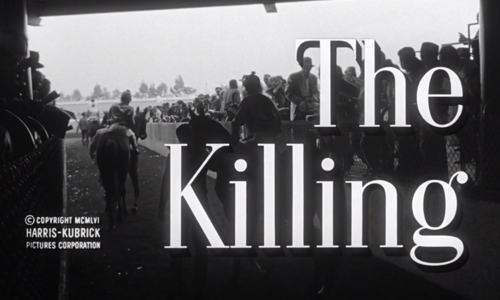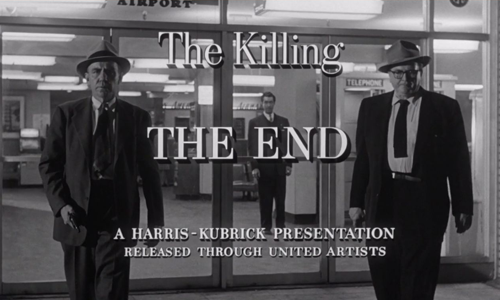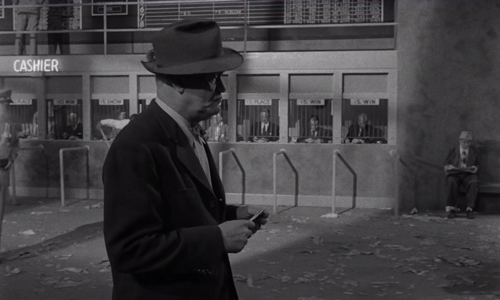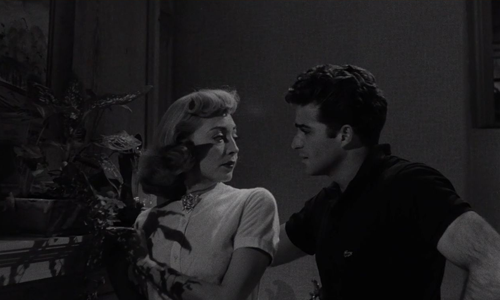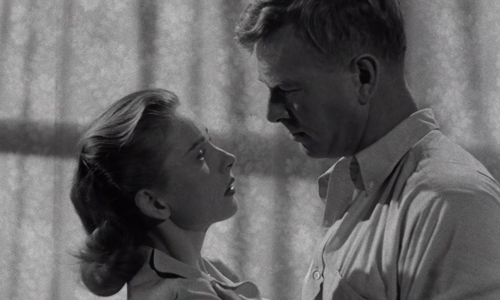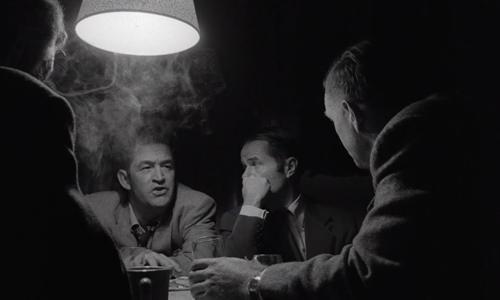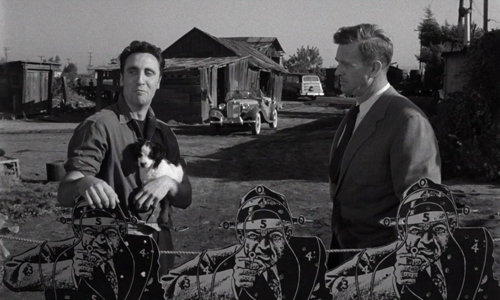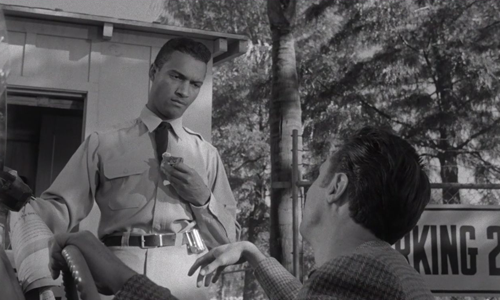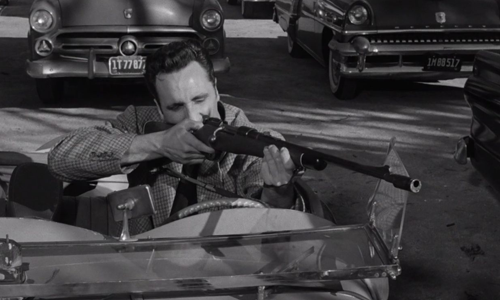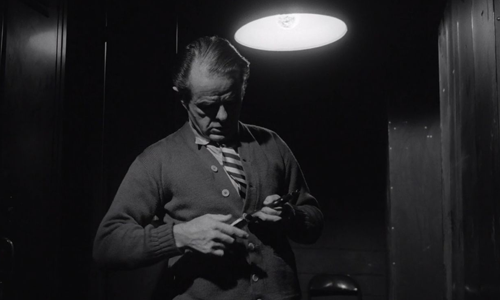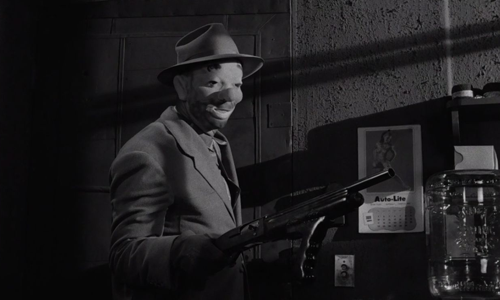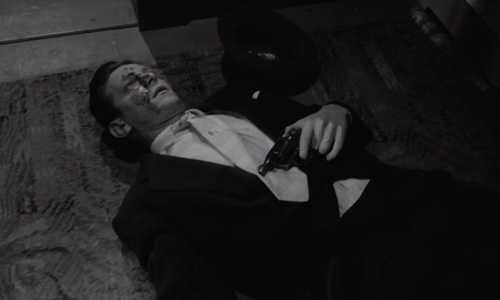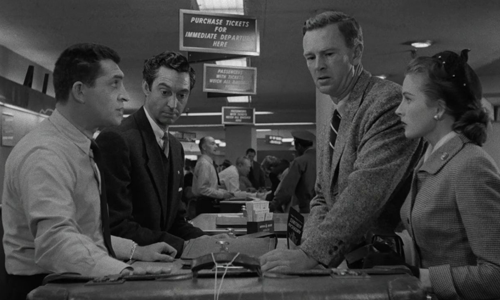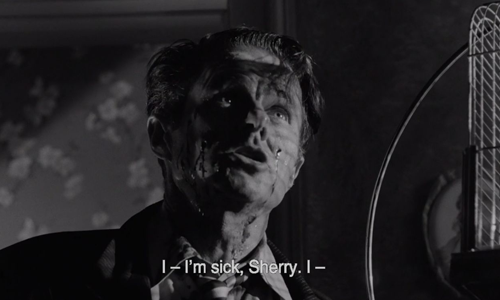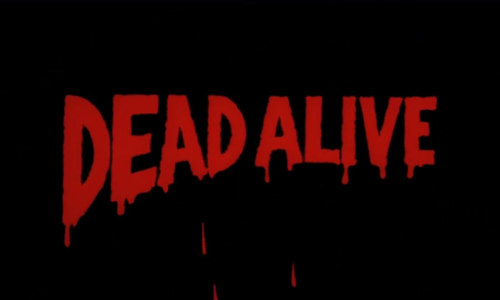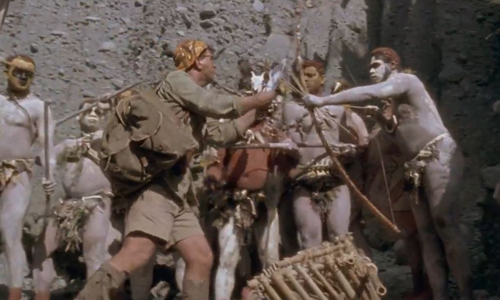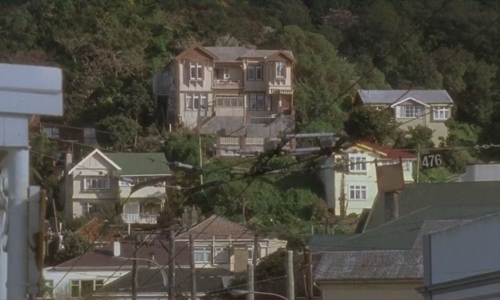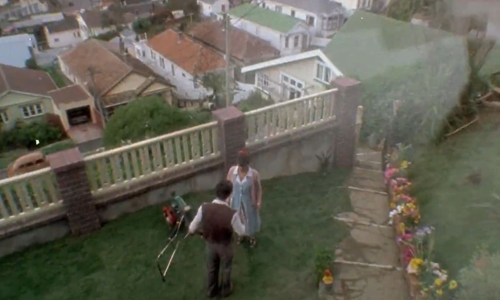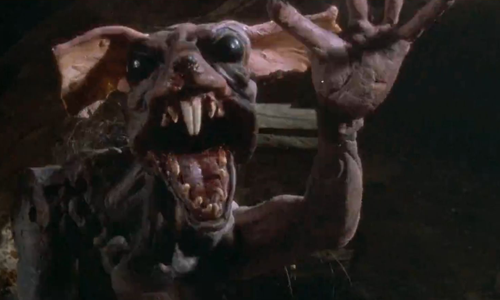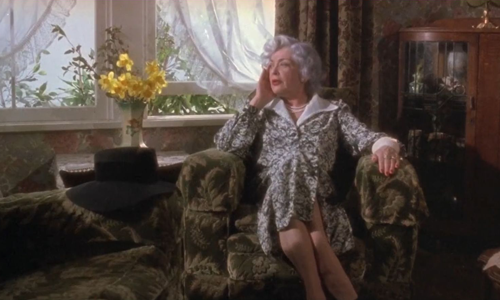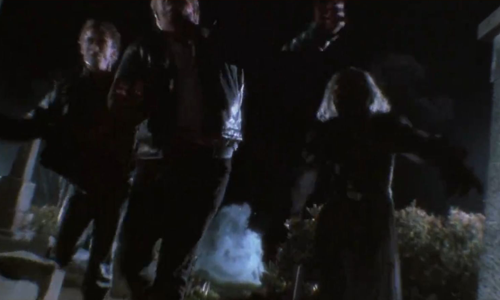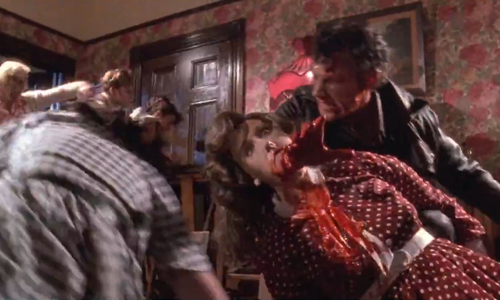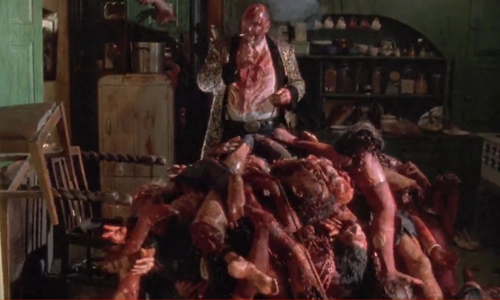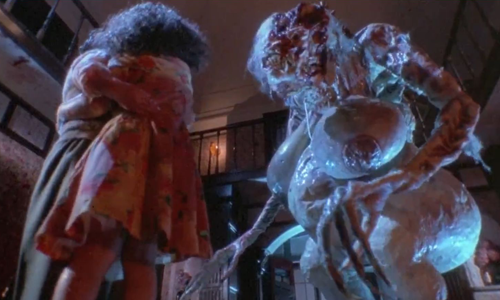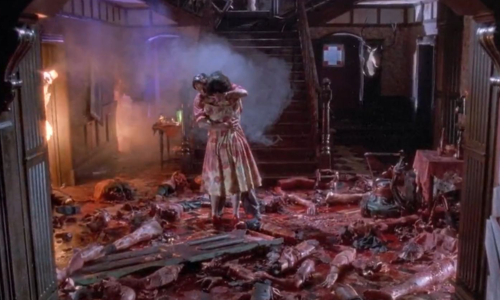#movie review
What are we doing here? 
Denis Villeneuve does it again in this beautiful and thrilling tale of morality, justice and the inconceivable fallacy that’s tied to fighting a war that cannot be won.
Sicario is about the war on drugs. It is centered on a justice seeking FBI agent of whom specializes in kidnappings. Without any acknowledgement or affiliation to an agency an agent of the Department of Defense, Josh Brolin, approaches the FBI specialist, played by Emily Blunt, to join his task force whose mission is to lure out a cartel boss from hiding.
This is without a doubt my favorite movie of the year. Villeneuve carefully frames every sequence with chaotic disparity and artistic wonder (a lot of that is credited to Roger Deakins).
As with his past two films, Villeneuve seemingly loves developing characters that essentially work to do the right thing and are typically portrayed as “straight shooters,” his characters seem to follow the philosophy that if they do good then good will be done unto them, but eventually are met with some kind of unfortunate cirumstance thus throwing the characters to the wolves of temptation and circumstance, where they are then forced to decide between what’s right, wrong and fair to their cause.
Emily Blunt plays an FBI agent dedicated to her job. Little is known about her past other than the fact that she’s a divorcee; probably because of her job. She seeks justice for the victims of the cartel’s kidnappings, knowing this, Brolin recruits her to his anti-drug enforcement task force with the promise of getting back at the cartel for their gruesome murders.
Josh Brolin plays his role with comedic candor as he calmly weaves his way up the cartel food chain unabashed by the violence and turmoil. His moral compass is pointed toward the greater good and does not hesitate to do what is necessary to get it done. His character represents efficacy as well as wisdom, for he understands the nature of the drug landscape and is willing to operate outside of any agency rules to get it done.
Benicio Del Toro is also in this, he plays an unnervingly calm agent of chaos; his position is not clear, who he takes orders from can be loosely interpreted in many ways — one thing is clear, he will not hesitate to perform whatever deed that must be done. His words are spoken softly and his actions decisive, his past is muddled in violence as the cartels took everything he cared about from him and he has since dedicated his life to returning the favor tenfold. One aspect to his role that I thought was an ingenious aspect to the film was that most of the cartel henchmen that unfortunately came upon his wraith, always asked “Medellin,” as this is a famous city in Colombia which is known to be the former drug capitol of the word during Pablo Escobar’s time, but has since fallen from that grace due to the rise of the Mexican cartels; so, it’s very interesting to see the cartel henchmen assume the involvement of Colombia as they scramble to takedown the cartels. Does this mean the DoD is working with Colombia? Sicario, never fully explains this, which only increases the intrinsic value of Del Toro’s character — it’s always a treat to see Del Toro’s talents properly fostered in a film
Brolin and Del Toro operate as two halves that bring balance as one devises a plan and looks at things with a disturbingly relaxed sense of well being, while the other, tortured by his past, does what most won’t to get the results he needs. All in the name of restoring balance to the drug trade.
The film’s greatest strength are in its action sequences. None of it is wasted on the pretense of style and serve a purpose, thus creating legitimate tension rather than brainless entertainment. And that is the genius of Villeneuve.
The film’s point is about the devaluation of human life when weighed against the mighty dollar as people are often times used as bait and or killed just for being involved in any facet of the drug trade. 

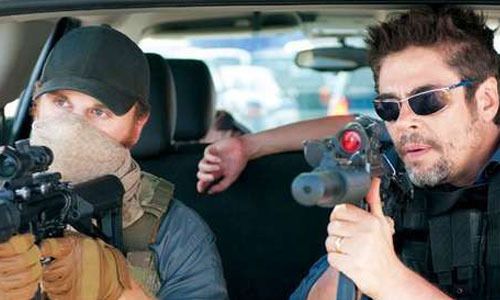
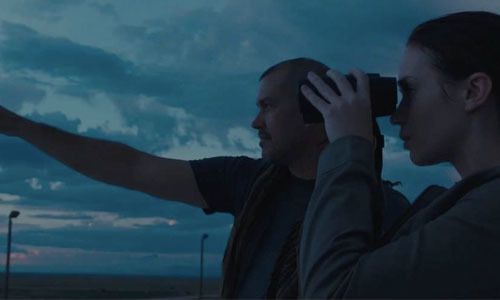
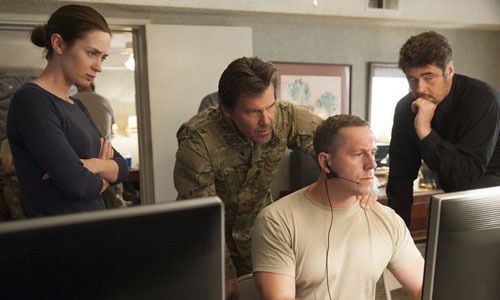


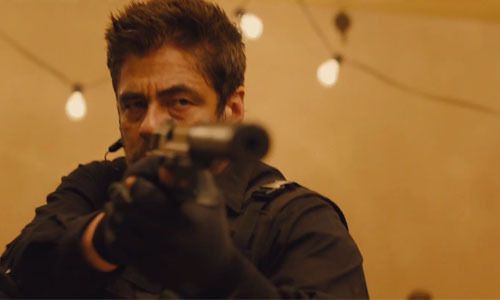 4/4
4/4
Cannot believe this is what Miller has been holding in all these years.
George Miller unleashes the full extent of his imagination in a carefully balanced “seesaw” of a movie. The film rips through the senses in its almost poetic simplicity with structure and incredibly long action sequences that pause only for very brief moments to increase the stakes of the film and the plight of its characters. Take all the extreme outlandish elements of the 3 previous films and take out the over acting and apply modern day tech and you get a perfected vision of what Miller originally wanted to portray and patiently waded through such films like Happy Feet and you (the audience) finally get what I can only say is an incredibly satisfying “high octane” thriller that puts the previous 3 cult hits to shame.
It is a post-apocalyptic future; how far from now? I don’t know. The world as we know it, or as much of it that Miller lets us see is reduced to desert wasteland divided by warring factions. Our hero Max is captured and dragged into a place known as “The Citadel” powered by the slave labor of many all to serve the purpose of one, Immortan Joe, of whom controls the most valuable assets known to man, water and gas. Joe lives similarly to that of a Pharaoh and only keeps his most trusted around him as his cabinet; all of them are members of his family. Max is kept alive to donate his blood to Joe’s warriors known as the “War Boys.” Much like a crazed despot Joe keeps a harem with 5 beautiful women of who appear flawless in an otherwise desolate landscape to mother his children. One of his own trusted officers named Furiosa runs off with the 5 wives to return to her homeland.
Mad Max: Fury Road has razor sharp action sequences powered by Miller’s crazy imagination as people fearlessly leap from vehicle to vehicle in high speed pursuits through the desert. The structure of the film is on point as the War Boys all have their roles to play; notable roles being that of the electric guitar player that’s tied to a giant rig to simply play power riffs to empower the war boys and to set the tone of things to come, much like drummer boys and buglers of the past. There are also crazed maniacal roles called “Polecats” who dangle on long poles in Buster Keaton-esque fashion as they swing from the top of poles from dune buggies to board other vehicles in acrobatic fashion.
I had heard in an interview that George Miller employed the consultation of the author of the Vagina Monologues, of whom have worked with victims of sexual abuse to create the demeanor and disposition of the 5 wives in this film. All of the actresses did a wonderful job portraying distrustful and distant visages as well as strong courageous roles when the occasion called for it.
Miller portrays all the wonders of womanhood as we see the 5 wives first appear in almost mirage like sequence in which their limber bodies are being bathed upon a desert landscape covered only in the thinnest of cloths — but throughout the film we see that although they appear to be delicate creatures they fare the perils of this savage wasteland. Lead by one of Charlize Theron’s more memorable roles as she brings an immeasurable sense of ferocity to the movie. Whether she plays an ambitious tycoon or a depressed wife she stays true to her roles and does great justice to the films she stars in by staying true to the aesthetics as she voluntarily buzzed her head for this role.
Although the dialogue is sparse, Miller is able to paint an effective picture using modern day technology to create viscreal imagery powered by knee jerk camera movements to accentuate the disjunctive nature of his savage imagination. The character development is created solely through the different environments in which the characters came, be it the underground grungey conditions of the war boys, to the beautiful paradise in the center of an otherwise claustrophobic and dry landscape made for Immortan Joe’s 5 wives — George Miller effectively brings together the different walks of life to fight for a common cause.
Miller blew my mind when I was younger and happened to stumble upon The Road Warrior on a random weekend afternoon on television wherein I learned how suspenseful a scene can be as I saw Mel Gibson desperately try to grab a hold of a shotgun shell while maintaining control of his vehicle during the middle of a chase, and blew me away again with the incredible use of CG infused backdrops and vivid color to breathe new life to his career defining franchise.
This is a revamp, but can also be a continuation in the franchise as it can be viewed as Max traversing the wasteland and stumbling upon random scenarios in which he becomes the reluctant hero as he searches for redemption.
I only wish the movie was longer.
4/4
Just because you can, doesn’t mean you should.
Ex-Machina is the brilliant undertaking of Alex Garland. It’s his directorial debut, and it is a lot of hype to live up to; considering, this film blows away all expectations.
A billionaire prodigy (Nathan) created a search engine called Bluebook that is used by over 90% of all internet users. He invites one of his employees (Caleb) to his estate that is built into an undisclosed location. He has him interact with a female AI (Ava) that he created and only the two now know of, as part of his first human trials outside of himself to test the AI’s compatibility with a stranger.
The film’s scenic value creates a lot of symbolism against Nathan as one notices that his subterranean estate is built into a mountain side alongside a river. His actual house however is one to marvel at as it resembles those fantastical modern architectural dreams only a billionaire would be able to afford, but others get to see pictures of on social media. But alas arriving to the point; it represents irony as the man truly enjoys nature as it is no accident that he built his own self sustaining generator so he can survive on his own proprietary energy devoid of outsiders. This balance of nature and technology shows just how much he wishes to combine the two — even though the creation of AI goes against the very nature he so likes to live in.
This film is the perfect example of what happens when one plays god and tries to quantify emotions into technology. Human emotions are one of the greater mysteries of life as people can be just as predictable and unpredictable in the choices and actions they make and or take. Once you give a blueprint to how one can manipulate human emotions it will create a sense of chaos as history proves; people do not like to be controlled or manipulated to do things outside of their own control.
Much like what is going on today as search engines are forced to give up our data to the government soon there will be an algorithm to humanity; we are already slowly seeing it in “targeted ads” via “cookies” stored on our computers.
As the story unfolds (without spoilers) we come to learn that our very own emotions can ultimately deceive us.
One thing of note to all philosophy buffs. At a certain point in the movie we witness Ava and her eagerness to see the world outside of her room. Nathan, being the creator detaches himself from having any emotional attachment to his creations as he has the ability to see it as exactly that, and he tries to control too much (a classic characteristic of all tech gurus) he tends to overlook his own folly, in that he created a being that can quantify human emotions and calculate God knows how many different scenarios at once before arriving to one they are satisfied with in their own sound logic, which is that of a sense of reasoning without emotion. Going back to the philosophical part; there is a scene in the movie where we see only shadows of people moving. Much like Plato’s Cave, it is a link to show that Ava knowing all there is to know about the world without seeing it, yearns to experience it for herself but much like the prisoners chained to the walls of the cave, she too is held captive in Nathan’s estate, only to have all the knowledge of the world without actually experiencing it.
Ex-Machina is a great film about the consequences we must suffer in our never-ending quest to seek knowledge and push the boundaries of humanity and just what it means to accept the limitations we as humans have.
“No fate but what me make.” -Sarah Connor
*Sidenote all this time I thought the actor playing Nathan (Oscar Isaac) was David Krumholtz and kept thinking throughout the movie, “you’ve come a long way since Santa Claus” but then Buzzfeed told me that they’re two different people, lol.
4/4
Michael Keaton…who knew?
I am literally astounded at the technical and storytelling innovation that went into this film.
Riggin Thomson (Keaton) is now just a former shell of himself from his prime during the early to mid-90’s where he reigned supreme as the “it” actor grossing billions of dollars off the “Birdman” franchise. He has since fallen off Hollywood relevancy and is attempting a comeback by writing, directing and starring in his own Broadway play that is loosely based on his life.
From the opening credits, the audience knows that this film marches to the beat of its own drum as the director nods to the rebellious Godard as he uses vibrant reds and blues to portray his opening credits, much like Godard’s work from the 60’s; the similar usage of typography and animation is used to set the tone for the film.
Alejandro González Iñárritu typically focuses on heavier themes and much more depressing narratives, from what I’ve seen (21 Grams & Babel). It was a welcoming surprise for me as this, relatively “dark comedy,” effectively weaves its way through the main characters ego revealing to himself the cruel truth he doesn’t want to hear, and then revealing to the audience (us) what he actually wants; as his ‘id’ is portrayed by his fictional on screen character “Birdman” as his conscience.
The film’s cinematography grabs a hold of your attention and forces you to move with the actors at their pace. I don’t know how they did it, but the movie almost feels like it was done in a single take.
Iñárritu, uses minimal surrealism in the film, which makes the film that much better, but more so he uses reality to show just how Keaton doesn’t really fit into society, anymore, as he’s refused to adapt to the times making his prescence in any scene almost surreal and anachronistic as we the audience are thinking to ourselves, everyone around Keaton’s character must be aware that he’s a washed up actor, thus creating a sense of tension in every scene as Keaton is just a hairline of a fracture away from losing it; and isn’t that just how an actor in real life is? Because a lot of their lives are surreal.
Overall though, I am glad the surrealism was kept to a minimum unlike films like “Synecdoche, New York” where I spent most of the movie trying to interpret Kaufman’s intentions, rather than enjoying it.
Keaton and Norton to Keaton and Stone — we get the most chemistry, as both pairs convincingly play out their roles to the extent where it didn’t even feel like acting; I actually found myself wishing success to Emma Stone’s character and an untimely demise for Edward Norton’s. Norton, also tears this film a new one as an experience obsessed actor that dabbles a little too much in his own methodology as he instigates fear amongst his cohorts, coupled with his compulsive attitude he goes off on his own self-absorbed tirades of being a real stage actor with actual range, rather than some former film superstar that relies on special effects and bloated budgets to gain notoriety.
These type of satirical autobiographical films seem to do wonders, revitilizing and or finding actor’s careers as we saw with Mickey Rourke in “The Wrestler” and Eminem with “8 Mile.” It even goes to show how much the public is hungry to see something “realistic” while poking fun at a person as long as its not themselves.
Suffering for your art/passion is a time honored tradition amongst creatives and if one feels themselves getting empowered after watching this film, one also gets to walk away with the feeling of acceptance in that, you’re not the only one that is suffering and or things could be worse…
Birdman was a breath of fresh air in an otherwise dull climate full of movies that:
1. Thanks to VOD and Redbox — movies are being pumped out left and right, I cannot keep up anymore, and it has to be assumed that most of the drabble being pumped out are not good.
2. Social media, tends to dumb down cinema nowadays, but watching a movie like this restores faith in the art.
3. (not that I am complaining) It’s nice to see a passionate film versus another cgi infused actioner.
Birdman, does not try to be something it is not. It delivers inspiring performances from everyone involved.
4/4
Oh what, Charles Dance is Dracula’s maker?
Dracula Untold is a piece of historical fiction (lol). Vlad the Impaler was a real person who struck fear into his opponents by impaling his victims, and Mehmed was a real Sultan during the Ottoman Empire (Turkey). Vlad and Mehmed did meet each other in the battlefield during Mehmed’s conquest of Southern Europe; whilst spreading Islam. What’s considered Southern Europe? I don’t know, other than Romania — because that’s where Bram Stoker’s Dracula (the vampire) takes place.
Vlad, wants peace as he’s tired from fighting and resents his violent past as well as his methods. He does not want to be known as “The Impaler.” He is the prince of his land and is in charge of the safety of his people. Vlad wants to be a kind but firm ruler, but his patience is tested as Mehmed encroaches into his lands thus commmitting an act of war, however, these are the Turks we are talking about and they have already conquered many lands and knowing this Vlad knew he stood no chance against the sheer size of Mehmed’s army. To raise the stakes even higher, Mehmed taunts Vlad by even threatening to take Vlad’s son to raise as his own. Not knowing what to do Vlad climbs the mountains that no one dares go near in search of a monster that can lend him immense power to fight the Turks.
Much of this film is centered around Vlad’s personal conflicts as the actor Luke Evans portrays Vlad in a one dimensional output of much distress as he cringes his face throughout the whole film, at just about everything.
The important lesson to be learned in this film is that committing your soul to the darkside comes with dire consequences that we as people cannot comprehend on how to control. You cannot seek guidance from a monster and any power lent to you by a creature dwelling in the dark, is just bad news.
Dracula Untold, is accidentally entertaining in that the film tries to make you sympathsize for Vlad as his choice was a difficult one, but when your kingdom and family is threatened what is a prince to do? But we must not forget this is also Dracula, we’re talking about.
I was sorely disappointed in the action sequences as the editing consisted of incredibly fast takes and just when you, the audience realize you were robbed of your time, the cut away scenes get even worse as the filmmakers thought they were clever in preserving the PG-13 rating as the last half of the only fight scene that mattered was resolved via the reflection of a falling blade of a fallen soldier in slow motion. Seriously? Wtf. It felt like I was watching an intro montage, which would’ve been okay, but this was already halfway into the movie.
One brightspot was the villain from my “go to” childhood action movie “The Last Action Hero,” was Dracula’s maker and that was amusing to me as I was able to recognize him right away even with the makeup; funny how those things stick with you. *note I did not mention Game of Thrones
I guess not much was to be expected as this is a cgi infused PG-13 film about Dracula; expectations are to be held in check as this is a farcry from Coppola’s Dracula. Credit is due to the writers as they were able to integrate some historical facts into the film which gave its plot some depth. Furthermore, I am such a sucker for these types of films about heroes with godlike strength — this won’t be the last PG-13 action movie I will be disappointed in and it certainly isn’t the first.
2/4
Open up and let the Devil in.
A Field in England, is a testament to Ben Wheatley’s skill in experimental filmmaking; in other words this is something you haven’t seen before. It is an awesome portrayal of macabre as well as subtle storytelling.
Amidst the English Civil War (during the 17th century) a servant that goes by Whitehead is charged with the task of finding an Irishman by the name of O'Neil. Whitehead flees from his handler’s grasp along with others who are fleeing from battle. Alone in a field, they are tricked into doing all the manual labor for an alchemist who had his assistant poison the deserters with psychedelic mushrooms, rendering them helpless to the normal conventions of reality, thus making them easier to control. And all this was done with the hopes of finding some kind of buried treasure.
A Field in England, in my opinion is a foray in the hypothetical, what if alchemy was real?
In this film I believe the director is saying it is and the concept is understood by a few, because after all it is taking place in the 17th Century.
There is a lot of showing and not telling during this movie, as the audience is forced to either sink or swim rather quickly. I understand that this film isn’t for everyone and it’s also not necessarily one’s own personal level of intelligence to understand or like this film, but rather your level of interest on the topic, or if you just enjoy great cinematography then you’ll like this film. Touching on the topic of the film; it’s about alchemy and the surge in interest it had during the 17th century under the guise that people thought they could transmute lead into gold.
Possible Spoilers (evidence from film to support my theory):
Whitehead is a homunculus (as he’s called one by his handler) and he was created by a man known simply as ‘master.’ I believe the Irishman he was charged to find, O'Neil, was an apprentice of Whitehead’s master who stole his notes on Alchemy and was able to teach himself the dark arts, this is why Whitehead was searching for him. O'Neil is later found buried, presumably in another realm as the deserters and Whitehead are forced to tug on a rope tied to a cryptic totem that later pulls O'Neil back onto their plane of existence.
O'neill also accuses Whitehead of knowing the location of the treasure as he’s taken into a tent and presumably tortured, but I think he was shown either a vision and or was 'activated’ by being force-fed these runes which allows his body to be a tool used to find things since he is homunculi; his body can technically be a vessel for other uses befitting of his creator. And afterwards when he’s done supposedly finding the location of the treasure he regurgitates the runes and is returned to a normal state of consciousness.
Wheatley does good in creating an atmosphere in which the most simple things are taught to be appreciated by the audience, for this film takes place during the English Civil War, and science is yet to fully blossom into what it is today, as the audience must grit their teeth through the poor hygiene that is gratuitously displayed throughout the film; which makes the film all that much more visceral to present day audience.
The tent scene was one of the most powerful scenes I have witnessed in cinema, as it is so simple, but the framing and the expression on the actor’s face as well as the music that plays over it gave it a haunting appeal as well as a dark and twisted fantastical sense of hilarity.
Overall I can say that this is a bit of sci-fi/thriller/period piece. Details that are captured is excellent even in an environment that is limited only by production budget but limitless in imagination as these 5 search the field for a treasure that only the supposed Whitehead himself knows of it’s whereabouts.
This is my first film I have seen from Wheatley and I like it a lot. It is a breath of fresh air, for his avant-garde style showed me something new, and daring for this is not a film that cannot ever possibly find commercial success but was still made in the name of art.
3.5/4
-DK
a fairy tale narrative told over a murder mystery novel.
The Grand Budapest Hotel is a film by the fabled Wes Anderson. It is his immediate follow-up to his 2012 hit Moonrise Kingdom and like such, shines on its ability as a story-telling masterpiece.
The film opens on multiple timelines that work as layers as one peels back to reveal another. It opens on a novel that is then taken over by the author’s narration of himself being told the story that he has written. The story follows a concierge that ran an esteemed hotel. Gustave was his name and he held great pride in his work as he kept a tight leash on his hotel and its workers making sure his guests were always entertained and taken care of. He also indulged in multiple affairs with many of the hotel’s guests, but only those that were lonely old rich women, who also happened to be blonde. One of the women meet a tragic demise and leaves a fortune to Gustave, however to his plight he is also charged with her murder, and he must now prove his innocence while avoiding the inevitable invasion of Mitteleuropa by the Fascists.
This is probably some of the best story-telling I have seen as it intermingles a murder mystery atop of an almost fantastical adventure story. One can assume Anderson takes from the works of Agatha Christie as he made room to make a character named Agatha.
At face value this film is a metaphorical tale about the death of chivalry. For, Gustave (Ralph Fiennes) goes out of his way to always portray a polite and calm demeanor, regardless of his current situation. His fault as a human lies in that he’s a philandering fool preying on the vulnerability of lonely old women, but the audience can’t help but side with his whimsical character for he authentically cares for all his lovers. It isn’t until the invasion of Poland which sparks the beginning of WWII, do we realize that was the proverbial “end” of chivalry as the entire world gets engulfed into war as well as the inevitable the loss of innocence that goes with the territory of total war.
Anderson’s artistic direction in this film was magnificent as CGI is substituted with practical set pieces that are infused into the film to look like a giant model unit created by that of a hobbyist; in this case it’s Wes Anderson. As closeups and vignettes are used to portray important aspects. Anderson also cleverly plays with the aspect ratio of the film in the same school of thought as Soderbergh to represent the different time periods in which the film takes place.
One aspect of the film that I really enjoyed was how the film takes place during the rise of the Third Reich, but the film never openly admits to the portrayal of Nazism. Anderson employs the use symbolic euphemisms as the SS symbol is cleverly disguised as Z’s that also look a little like lightning bolts. He doesn’t count on the momentum of WWII to drive his film as it stands on its own merit.
Anderson has come a long way in terms of his writing/directing since Bottle Rocket. Admittedly so, I was personally never a fan of his work until Darjeeling Limited, because that was the first of his films I felt, started to make sense, for he always portrayed his actors as disjunctive shells of human beings that appear too doped up on Xanax for me to ever care about. However, his style always compelled me to throw money his way for the price of admission, and I am glad I did for this film does not disappoint.
4/4
-DK
Science fiction that requires no thinking.
Oblivion is a film by Joseph Kosinski, one cannot completely hate this film, for the director tries to expose elements of a true sci-fi film to the masses, of whom would otherwise never give two squirts of piss about the genre. It has all the makings of a great film; the main point being that existential philosophy is intertwined into a story about a post-apocalyptic future on Earth, in which the narration in it of itself is just an illusion.
An alien race known as “Scavs” suddenly appear in Earth’s orbit, they lay waste to our planet for theirs is ruined and they are in need of our resources. Humans are forced to use nukes to stop the Scavs but in doing so ruin Earth, leaving it uninhabitable. Humans are relocated to one of the moons of Saturn and Earth is drained of its remaining resources to help power the human’s new home. in order for this to happen a 2-man team is left on Earth to maintain the machines that carry out these tasks. One day pods crash land on Earth with human survivors and this sets off a chain of events that begin to arise questions within one of the two workers on Earth.
Kosinski does not disappoint in the visual sector as he brings to life the visual effects—effectively within the boundaries of Oblivion’s story. The design of the ships as well as the costumes and the minimal usage of colors reminds the viewer heavily of the greater films that inspired this one.
My main gripe with this film is that there isn’t much originality in it. It is an over simplified high production film that doesn’t leave much to the imagination, but to be fair I saw this film as an introductory lesson in great sci-fi, for the demographic, this film obviously tries to capture are the same people who are fans of Tron and or Tron Legacy, the latter being a film also by Kosinski.
The film tries to weigh upon our emotions as it questions the true identity and worth of the human soul as well as the value of our memories. What makes people, people? Physically we are present, but that’s something that science is proving can be artificially created, so what makes you, you? Oblivion tries to capture this existential state of being in an elementary way as it trudges along its beautiful CGI induced landscapes. It really presents a false sense of being in that it tries to be too intelligible for its own good. Oblivion even spotlights Andrew Wyeth’s renowned art piece “Christina’s World.” A painting considered to be in high regard and a prime example of existential art, for at first glance you see a girl in the prairie and depending on the person one can interpret this painting many different ways for her positioning as well as the isolation invokes many feelings in people. Oblivion tries to piggyback a lot of the film’s contents off the profound content from other people’s works as this film centers around the premise that things are just an illusion and human’s are very easy to manipulate with the right amount of fear instilled into their being.
Development is almost non-existent in this film, as it suffers quality to squeeze in quantity; while at the same time hiding its twists; I guess this is something that would have served better had they hired a better screenwriter or maybe added 15-20 more minutes to the film. It has the feeling of being profound but take away all the bells and whistles and one realizes that everything in this film that gives it any kind of merit is actually borrowed from other films, leaving behind a movie that stands alone as a barely passable action film with a sci-fi theme.
The desolation in the film was the best emotional response I got from it, as it was kept on a very tight leash. To understand that there’s so much empty space available on Earth, but to be limited to such a small sector was really invigorating in terms of the film’s mystique.
I applaud the director on being so sci-fi savvy, and admire his ambition in wanting to expose a great genre that doesn’t get the attention it deserves to a wider audience. However, he needs to work on a project in a collaborative effort, for I do not think he can do it alone. One day, I would love to see his talents develop under the tutelage of the Wachowskis, together they can make a film that would be a classic.
¾
-DK
At least he punched someone in this one.
Man of Steel is Zack Snyder’s take on the Superman franchise. It is better than its predecessor by Bryan Singer, but doesn’t even come close to Nolan’s Batman, in terms of quality. As far as I am concerned this is as good as it’s going to get for Superman, for it is a decent starting point, and it has the potential to only get better.
The film opens on a planet known as Krypton in which a renowned scientist urges his leaders to cease their drilling for it is draining the planet’s natural resources and will eventually lead the planet to ruin. During his tirade a General by the name of Zod unleashes his fury on the leaders due to their negligence on the governance of Krypton and stages a military coup to try and save Krypton and preserve its ways. The scientist otherwise known as Jor-El has conceived a child through natural ways, when Krypton has at this point turned childbirth into a function in which children are literally grown in vast underground fields. As Krypton is laid to ruins Jor-El manages to evacuate his son to planet Earth. Man of Steel, follows Clark Kent as he embarks on a journey to find out about his origins. Throughout his journey he runs into obstacles that remind him of his youth, as he bottles all his anxiety from discovering he is not of this planet and has incredible abilities; he learns to be more human from his foster parents and with the help of Lois Lane.
I can’t say much about this film, for its magnitude and pressure to perform was projected onto the audience. I am not quite sure what it is about it, but the film reeked of desperation; perhaps, it was the similar dark undertones it borrowed from the successful Dark Knight franchise or maybe it was its overwhelmingly large budget…in either case the film felt disenfranchised as it chugged along its long duration pulling its audience from one theme to another.
One can tell that Snyder (director) and Goyer (writer) both wanted to bring another side of Superman onto the big screen, but the with the amount of story that needs to be told in order to make a reboot successful, proved to be no easy task and the weight of that pressure is shown for barely any development is placed upon the love story, and Superman’s flashbacks with his foster parents are overtly heart wrenching in content, but with no actual connection with its audience. The film just felt like I was given a highlight reel of Superman’s origins.
Much of the film is mired in short sequences of up close shots and quick flashbacks to set the tone for the upcoming scene. It felt like I was being presented a beautiful piece of cinematic art with the annoying director’s commentary forcibly playing in the background.
The characters were presented in a rudimentary fashion for we get the obligatory tough guy with good intentions who is un-trusting of superman but eventually comes to terms with him after his life is saved. Lois Lane annoyingly gets into trouble more frequently than needed and is shown to be a tough no “bullshit” character, but sadly it ends there, for her hard nosed behavior constantly places her into dire situations, for an example she wanders into a cave in the middle of the night, oh and that cave happens to be in the Arctic…why on earth would you even venture out at that time of night? Laurence Fishburne is also in this movie, and his acting just felt unmotivated.
Michael Shannon as Zod was great for his stoic presentation created a moral conundrum; being an antihero, he was conditioned to think and function in one way, and when the audience realizes he is doing a lot of his actions through a lack of choice, in turn creates a moral conundrum for Superman. His choice, albeit the hard one is made clear as he chooses the human race over his own people.
Aside from the lack of substance in this film’s drama, the action sequences were entertaining, as an array of superhuman feats were portrayed in a barbaric fashion. Superman and his enemies wail on each other relentlessly in an almost pointless battle of superpowers, but the CGI fight choreography is still really cool.
Choice is the real theme of this film, as Jor-El wanted to create this option for his son, creating a sense of uncertainty. Superman, although gifted with superhuman abilities must also bare the weight of the hardest choices, creating a balance. The religious argument comes into play here as Jor-El wants a better future for his son, a future in which he is gifted with the power to choose his own destiny and to do this he sends his only son to Earth. Doing so, shifts the balance of power in his favor for Kryptonians apparently flourish in the Sun’s radiation granting them powers. Superman becomes Earth’s savior at the age of 33, coincidentally around the same time Jesus was crucified. It’s up to you to decide the filmmakers intents on this one, because I am not touching this argument with a 10ft pole.
Overall, Man of Steel was a real testament to Zack Snyder’s ability to take profound content and just barely scrape away with a decent film. It felt like the weight of its production budget and the pressure to perform weighed down its content and felt like everyone involved was on auto pilot—regardless of who’s in this film none of the actors could save it. Studios need to learn that churning these superhero movies out the way they do is not a good idea for its becoming very apparent that they are in it for the money, and are exploiting its fanbase. Norrmally these facts are well hidden through marketing but now its just too obvious as the market is flooded with this shit.
¾
-DK
Tradition, squandered by youth.
If…., is a film by Lindsay Anderson, a director so meticulous, he’s able to capture the non-sequential spontaneous acts of adolescent boys and frame it in such a way that forces the audience to admire each sequence in the movie.
This film follows the path of students entering their senior year at a boarding school in England during its post WWII era. They are constantly drilled to uphold tradition as well as pride for their country. As adolescents they naturally rebel against the system in typical fashion; drinking, smoking, sneaking off campus…Their expectations for life and their school eventually go completely awry as their own boredom takes over and they plan to lash out violently towards their fellow classmates as well as teachers.
Lindsay Anderson’s vision for the film is a cinematographic masterpiece, in which he portrays an err of caution towards Britain and their traditionalism as they needlessly force old values onto their youths. And grant privilege to those who are undeserving and solely given privileges just because of their birth rights.
Anarchy, is the film’s greatest prescursor as the main characters often break the rules of the strict boarding school by intentionally going against all of its teachings. Their dormitory is even transformed with pictures of war and violence, as its contents decorate their walls; giving clue to the audience that these boys are “lost” and are seeking a greater focal point for their adolescent mind sets. They are seeking for something more, something to fight for and believe in, but cannot find due to the rigid nature of the traditions they must live by.
Like all films that go against archaic traditions and enforce progressive values, the film itself, in its storytelling is different. From the same school of thought as Godard, the film bounces from black and white to color; I tried to think really hard what the director’s intentions were behind this ploy, but couldn’t quite come up with a reason other then the fact that whenever the black and white sequences were occurring, the most simple and mundane tasks were being displayed on screen.
If…., is a great example of a film with not much going on for the majority of its duration, but builds upon performance and its content; the director does a great job with shot selection for he must have had a good working relationship with the cinematographer as it shows in each scene. The film stands out as social commentary and art, the majority of the film is memorable visually in my mind like a photo memorabilia. Lastly, as a side note; it goes without saying, this must have been a film J.K. Rowling scrutinized over for a lot of the details in the film, down to even how the characters are dressed remind me heavily of Harry Potter…
4/4
-DK
Perseverance it’s what keeps you going.
Gravity is a film directed by Alfonso Cuaron, a rare director that is able to take virtually any story handed to him and have it be told through beautiful cinematic sequences. From A Little Princess to Children of Men, his vision for movies is unparalleled and always plummets its audience deep into his film’s story.
A team of astronauts from NASA are sent into space to fix the orbiting Hubble telescope. During their mission another orbiting satellite is destroyed and its remnants now space debris. The debris is rapidly hurdling itself toward the team of NASA astronauts and inevitably makes contact with them, destroying their ship and leaving two astronauts stranded right outside Earth’s atmosphere.
When watching Gravity, and its plot develop, the audience not only is impressed by the amazing visuals in the film, but also by the emotional depth it carries. Sandra Bullock carries the entire film on her back as she goes from the disparate astronaut of whom essentially is in space to do a job and is all “business,” unlike George Clooney, who is often cracking jokes and telling stories while doing his spacewalk. It is in the small moments of dialogue between Bullock and Clooney do we get to realize what each character is about; and the different reasons they have in partaking in a remarkable experience of going to space.
Bullock is disjointed and wandering life with no destination, which makes space the perfect place for her; her character suffered through a tragedy in which her daughter’s life was taken from her due to a freak accident, and it left Bullock questioning the meaning of her existence; with work being the only reason for her existence.
She uses the opportunity that she has with Clooney to talk to him about her problems; turning space into her proverbial chaise lounge in a psychiatrist’s office. It is in these intimate moments that the audience can realize, that there are moments in life that will drag us down, but it’s how we overcome our obstacles and what we take away from the life lesson, is what shapes our future.
In the beginning Bullock’s character goes into space where the lack of gravity is symbolism for her not wanting to face the weight of her issues, but ironically enough it is her issues that help her realize her true strength and helps guide her through her predicament.
Cuaron majestically captures Bullock in the most beautiful ways as her dainty but fit body whimsically floats around in zero gravity, and her emotional depth drives the film past being just a visual spectacle. The moral of the film is simplified due to the simple nature of space and its representation of nothing and everything; the point here is to always persevere against all odds.
This is hands down the single greatest cinematic experience I’ve had in the better part of the last 3 years. Cuaron restores my faith in modern cinema with this gem. This entire film is one long breathtaking visual feat, packed with uncompromising suspense and reminds us that the problems we face on a daily basis is nothing compared to the grand scheme of life.
4/4
-DK
Nurturing genius.
The Killing (1956) is a film by Stanley Kubrick. It has the makings of a classic, but held back only because of the time period in which the film was released, but nevertheless it’s still a prolific look into the minutia of Kubrick.
An ex-convict, finally free from Alcatraz has planned a heist down to the ’t.’ He has gathered all the right pieces that he must need to make it succeed as he brings together a team of people all necessary for the success of the heist. However, the one thing he could not calculate were each person’s motives as well as their personal lives; as the story unfurls so does the universe’s uncertainty as the otherwise perfect plan slowly unravels due to the unpredictable nature of the human condition.
This is a very enjoyable film, for its narration creates the momentum for the film as the ominous narrator pushes the story along in the form of a cautionary tale. The narration also gives clue to the fact that this heist had already happened and that as the audience what we are watching is a re-telling of it, giving the film a superlative feel for the audience as we get to be spoiled with Kubrick’s relatively genius and innovative screenplay.
It’s amazing how much “fat-trimming” is done to the film, as each character isn’t developed by their individuality, for it seemed like the decade in which it takes place defines the characters, for all the roles were seemingly cliche. Yet their intentions for taking the job are all highlighted in their respective categories, which allows the audience to realize why it’s so difficult managing people, because everyone has problems of their own, but will place them on the “back burner” in order to make capital, and to maintain a level of professionalism. Characters need not apply in heist films, only their skill sets, because the success and failure of a heist film lie within the details of the film’s writing.
Kubrick indeed captures the violence in the film with great shock, relative to its time period, as its shaky movements makes its rounds, carefully framing each shot to emphasize the actions of the individuals involved in the caper.
Stanley Kubrick even gives a nod to the game of chess. He alludes to the fact that like chess even the smallest movement of its pieces can completely alter the outcome of the game. This is a great metaphor for the plot as a lot of emphasis is placed upon the precision of the people involved in the heist, and how important each of their roles are to the overall success of the job.
The Killing was an absolute privilege to watch. It shows the makings of a genius filmmaker who will later move on to make 2001, Dr. Strangelove, Barry Lyndon etc. It’s not an depth character study like Clockwork, nor is it revolutionary like 2001, but The Killing is a solid heist film that is created with careful detail
3.5/4
-DK
Blood, guts and a lawnmower.
Dead Alive (aka Braindead) is directed by the fabled Peter Jackson. This film is an exhibition of gore with a context of hilarity. Although corny, the film exercises great discipline as Jackson was able to combine comedy, violence, romance, all of which get summed up in a satisfying denouement.
In a small town in Australia or New Zealand (I think it’s AU or NZ because people were flipping the bird with the “V” sign) a Sumatran Rat-Monkey has been flown in to show it off at the zoo. A histrionic mother spies on her son as he’s on a date at the zoo, unaware of her surroundings she is bitten by the Rat Monkey and is quickly turned into a psychotic zombie. Unbeknownst to her son who is named Lionel; he struggles to keep her “alive” as he takes on a hilarious sense of denial and treats her with the same attention as if she was alive, but with the same precautions one would take with a wild animal. Her condition worsens and soon she is biting others and as they turn, Lionel realizes there is too much to handle between his new found lover, his scheming uncle and his uncontrollable collection of zombies…
The environment created by Jackson in this film adds to this film’s core values, as it doesn’t take itself seriously. The design of the town in which Lionel lives in mirrors that of an ideal “small town” during the 50’s, occupied by set pieces that rival the model set in which “Mr. Roger’s Neighborhood” takes place. Overall, the theme here is “happy go-lucky.” All these elements eventually get shit on by the irony imposed by Jackson in this “squarish” town when the blood and gore begin to splatter, which only adds to the film’s aesthetic appeal.
Peter Jackson, has crafted a wonderful cultist gem in this movie. I loved all of its “campy” elements as it takes on a light-hearted approach to gore a la Sam Raimi. There are absurd close-ups and the content is a joke, at one point there is a kung-fu priest who fights the zombies in the name of the lord as he begins to dismember their body parts with his brute strength, then two zombies even copulate and create a mischievous cannibalistic zombie baby that comically wreaks havoc throughout the duration of the film. By the film’s climax the protagonist plows his way through rows of zombies with his lawnmower strapped to his person and is left in a puddle of blood, so much blood that he’s barely able to stand without slipping.
Dead Alive even finds time through all of its gore infused calamity to even bring closure to the film’s protagonist as he finds out that his domineering mother isn’t the saint he thought she was. Jackson even hints towards an extreme bout of symbolism as he shows Lionel being “born anew” for Lionel gets absorbed into his mother’s womb and has to tear himself out to be free of her, and gain his freedom.
This film is by far one of the most entertaining films I have ever seen. I love these corny forays into gore, it really let’s the imagination run free without having it be sadistic. I know however, that this film’s content isn’t for everyone since not many can take its subject matter seriously enough to enjoy, if that makes sense to you…
3.5/4
-DK
I read a lot more this month which was good, although two out of the four books were pretty average. It took me a while to finish reviews with work and everything, hence only finishing this now. I also borrowed quite a few books from the library, and all the books I read were library books.
I’m still doing @bookbandit‘stbrbusterchallenge2022to get through as many books on my TBR as possible!
I also answered @lizziethereader‘s book qns: fave reads of the yr,buying a book twice,how previous book influences enjoyment of current read and did the Last Book I… tag game.
Things of mine to check out: quotes,currently readingandjust finishedbook pics!
READ & REVIEWED:
★★★★The Duke & I by Julia Quinn (Bridgertons #1) [REVIEW]
★★★The Wedding Date by Jasmine Guillory (The Wedding Date #1) [REVIEW]
★★★★1/2 Iron Widowby Xiran Jay Zhao (Iron Widow #1) [REVIEW]
★★★The Paris Apartmentby Lucy Foley [REVIEW]
You can check out my Goodreads here!
WATCHED & REVIEWED:
The Weekend Away (2022) dir. Kim Farrant[REVIEW]
Killing Eve Season 4 [REVIEW]
HeartstopperSeason 1 [REVIEW]
I wrote a piece for the BuzzFeed Community Summer Challenge and I would really appreciate the support of just clicking the link. The post is my first attempt at a movie review/sarcastic and honest criticism of Arab American stereotypes.
Stop Palestinian hate.
Palestinian Girl Watches Adam Sandler’s You Don’t Mess With The Zohan So You Don’t Have To.
So much better than the 2016 remake.
The movie started off very slowly… but once the story picked up, it kept me glued until the final moments.

It’s not quite as good as the first one and it could’ve benefited from being a bit longer (to flesh out parts of the storyline)… but it’s still a good movie.

The big kid in me couldn’t wait to watch this.
It’s a bit intense in certain places… but it was still good fun to watch.


The Star
Born into show business, Dolores Costello’s parents, Maurice and Mae, were both performers on stage and in early films for Vitagraph. Dolores had multiple credits in Vitagraph films before she even celebrated her tenth birthday. In fact, I’ve already covered one of Dolores’ early films on this blog, as part of my Christmas movie throwback list.
As Dolores and her sister Helene aged out of child roles, they hopped over to New York and worked as models and on stage for Florenz Ziegfeld. Famed Broadway producer Ziegfeld ran a series of very successful revues on Broadway featuring showgirls who exemplified a specific brand of free-wheeling, vigorous femininity. Such was their popularity that the nickname “Ziegfeld girl” had nationwide recognition. Many Ziegfeld girls found success on film – Dolores and Helene were brought back to the movie business by Warner Brothers. After some minor roles, Dolores was picked by John Barrymore to star alongside him in The Sea Beast (1926), which was loosely inspired by the novel Moby-Dick. Dolores’ star rose dramatically over the next few years and she would marry Barrymore in 1928.

The Cosplay
When I originally saw these portraits of Costello, I immediately wanted to recreate them in closet cosplay. But, even now, I haven’t been able to definitively pinpoint when they were taken or if they were taken to promote a specific film. Based on her styling, I reckon they were likely shot around 1928-29. Then I came across an uncited suggestion that they were taken during the production of Noah’s Ark (1928). So, I watched it and the assumption seems probable. I did not intend to make this a post about a movie, but Noah’s Ark is so interesting, I couldn’t help myself!

The Film
Noah’s Ark is fascinating. It stands firmly between the silent and sound eras. Darryl F. Zanuck conceived the film as a dual story: a World War I romance tale and a creative retelling of the story of Noah from the book of Genesis. Originally planned as a fully-silent epic, the production of Noah’s Ark was extended due to the emergence of talkies. Sound segments were filmed making Noah’s Ark one of many hybrid films made in this transitional period. Though it was released at the end of Hollywood’s sound/silent hybrid cycle, it was a big box office success.

The film begins with a preface likening biblical stories to contemporary life, easing the viewer into the mirrored story of the flood/WWI. The story commences with our cast of characters on a train traveling through Europe, carrying a very international crowd. We meet two all-American types, Travis (George O’Brien) and Al (Guinn “Big Boy” Williams), a German showgirl, Marie (Costello), a minister (Paul McAllister), and a Russian intelligence agent, Nickoloff (Noah Beery). The train is violently derailed over a bridge, but Travis and Al manage to save Marie and end up at a local inn with other survivors, including Nikoloff. Travis saves Marie once more that night, as Nickoloff sneaks into her room with ill intent. At the same time, soldiers arrive at the inn announcing that war has broken out.
Later, in Paris, Marie and Travis have fallen in love and marry, while Al enlists in the army. Travis finds it hard to say goodbye to his good friend and gets swept up when he sees Al marching away. Travis quickly joins up too, leaving Marie to fend for herself–a German citizen stuck in France in the middle of the war(!!!). All three lose touch. In a heart-wrenching turn of events, when Al and Travis by chance end up in the same trench together, the chaos of the battlefield leads Travis to accidentally kill Al with a grenade. Back in the city, Marie has resumed working as a showgirl where she is recognized by Nickoloff, who has her arrested as a German spy. Nickoloff plants evidence on her and uses his influence to ensure that she gets the firing squad. In another chance encounter, one of the military men assigned to carry out the execution is Travis, who immediately attempts to stop the execution. At that moment, however, a German attack buries the whole lot of them under a ton of rubble. As they sit without much hope of survival, the minister (the same one from the train), recounts the story of the flood.
Noah (McAllister) lives in a kingdom ruled by King Nephilim (Beery) who worships a god called Jaghuth. God warns Noah of the oncoming flood and Noah has his sons begin constructing a massive ark. One of Noah’s sons, Japheth (O’Brien), is in love with their servant girl, Miriam (Costello). King Nephilim plans to sacrifice Miriam and kidnaps her. When Japheth tries to save Miriam, he is captured, blinded, and forced into hard labor. The flood comes suddenly just as Miriam is about to be killed. Japheth manages to escape his chains and his sight is restored divinely. He finds Miriam and the two make their way to the ark. Meanwhile, a whole menagerie of animals also make their way to the ark while masses of people are battered by waves and washed away.
Returning to the 1910s, the people buried under the rubble are rescued and learn that the armistice is signed and the war is over.
READ MORE below the jump!
The production of this film was a massive undertaking. All of the special effects are dazzling. The compositing, miniature work, and matte paintings all really stood out to me. Now, the flood sequences were a lot to take in. It’s been reported that some stunt performers were killed filming these scenes and many were badly injured. I managed to track down five different books that report this, all with slightly different accounts. However, none of them cite a source for this information, so I’m not sure how much of it is apocryphal. Regardless, it’s easy to believe. Many of the shots of the flood waters bombarding these extras are wide shots with lots of people and lots of water. Trying to film those shots while adequately monitoring the safety of all performers seems likely impossible. (One reason we should be very grateful for CG nowadays IMO.)
I’d honestly recommend this movie broadly because its excess alone is remarkable and the dual-story format is entertainingly strange. However, watching this on the other side of the Second World War makes the hopeful ending totally gut wrenching.
Also, the relationship between Al and Travis is so so so queer. O’Brien and Williams have a lot more chemistry together than O’Brien and Costello. But, honestly, that chemistry imbalance actually makes the 1910s section more interesting.
Despite the film’s extended production, it made a very tidy profit. While Costello’s films during the silent/sound transition were popular, she had a minor speech impediment that made the process bumpy for her. And so, a few years later, Costello chose to retire to focus on raising her children. After divorcing Barrymore, Costello made a strong, but unfortunately short comeback to films. Thankfully, before her re-retirement in the 1940s, we all got her wonderful turn in The Magnificent Ambersons(1942).

Dolores Costello, for me, represents a kind of sehnsucht. The fits and starts of her career gave us captivating glimpses at what could have been a full and ranging filmography, but never came to fruition. Noah’s Ark is one of those glimpses. The gravity of Marie’s situation settling on to her is so effectively communicated through Costello’s face and body language–all of the uncertainty, anxiety, abandonment–that little needs to be made explicit in the 1910s section. What a gift she had!

An addition to my previous post about Eternals reviews. No spoilers here but the article I mention does have spoilers so if you wanna read it this is my heads up to you! :)
As always: my blog is a safe space and rudeness and negativity will be deleted and ignored :)

A white guy writing a review that has spoilers, completely takes a very important Phastos scene out of context to make it bad and complains that Salma Hayek was not even fun or “hayeky” is one great example of why we also need diversity in film criticism.
He provides no context or details of who the characters really are and can do, just very generic stuff, and he carefully chose what he was going to reveal about these two.
Interesting…
I won’t talk about the flashback he mentions but basically, to explain: Phastos is an inventor and engineer, and he feels guilty about what humanity did with his help with technology, he did NOT build anything intending to cause harm but he helped people evolve, just like the other eternals did in their own ways, so when he sees what humans did with technological inventions he feels like he took part in it, in the horrible things people did to each other. I’m sure Phastos still has this guilty in him, specially with the advanced world we live in where horrible things happen with the help of technology all the time.
About Salma: “And the group’s leader Ajak is played by Salma Hayek, who is not even allowed to be fun and Salma Hayeky!” I don’t even have to explain his complaint about Salma cause that’s just so clearly xenophobic and sexist his quote speaks for itself. She is a leader and a healer, is she suppose to heal by the power of gritos?
He is not even trying to hide that he expected her to show up yelling in Spanish at the eternals and acting crazy (as we latinas often do in movies). Perfect example of how these people will only like the angry and loud latina and when we have a dramatic role they’ll hate it.
We need more inclusion in film criticism, so productions are not affected by the prejudice that goes in the minds of the majority of the people who’s opinions are valued and considered as the right ones, specially those who get to watch them first and can really damage a movie’s marketing and future chances of diverse productions to get produced.

